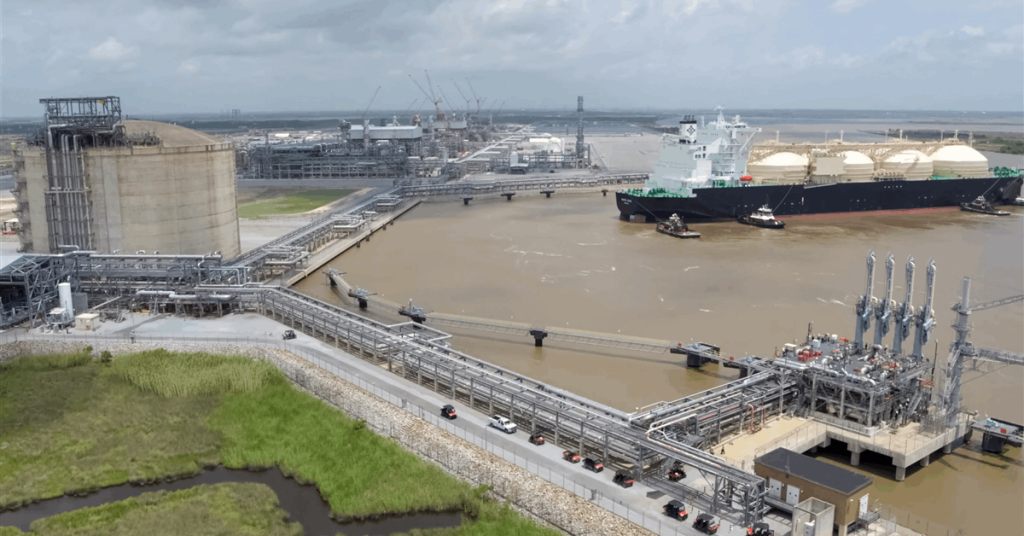Staff at the Federal Energy Regulatory Commission (FERC) has issued a final supplemental environmental impact statement (SEIS) for NextDecade Corp.’s Rio Grande LNG and the associated pipeline project owned by Enbridge Inc.
FERC’s ongoing review includes the first five of eight liquefaction trains planned for Rio Grande LNG. Trains I to V each have a designed capacity of 5.4 million metric tons per annum (MMtpa), according to the proposal to FERC.
Meanwhile the Rio Bravo Pipeline is designed to carry up to 4.5 billion cubic feet a day of natural gas from the Agua Dulce supply area to the liquefaction facility in Brownsville, Texas.
The new SEIS is in response to a remand by the Court of Appeals for the District of Columbia Circuit, issued August 2024, of FERC’s reauthorization of the projects. In the August 2024 order the court vacated FERC’s authorization issued April 2023 because the commission had not issued a supplemental EIS. The August 2024 ruling was the court’s second remand for the project.
In March 2025, the court revised its August 2024 ruling and issued a remand without vacatur.
In the new SEIS, issued July 31, 2025, “FERC staff conclude that… communities in the areas near the Rio Grande LNG Terminal may experience significant cumulative visual impacts”, FERC said in a statement online.
“Specific to air quality impacts, we clarify that the project’s air quality impacts on communities with environmental justice concerns would also be disproportionate and adverse; however, RG LNG’s air quality analysis demonstrates that air quality impacts near the Rio Grande LNG Terminal would not be significant, with the exception of two discrete areas just north of the LNG terminal where the cumulative model shows an exceedance of the annual PM2.5 SIL, and thus we conclude air quality impacts in those areas would be significant.
“Specific to the RB Pipeline, the revised air quality dispersion modeling that shows that impacts from Compressor Station 1 would not exceed the NAAQS. Therefore, air quality impacts on communities with environmental justice concerns from operation of Compressor Station 1 would be less than significant.
“For all other resources, FERC staff continues to conclude that approval of the projects would result in less than significant impacts, with implementation of the environmental conditions set forth in the Commission’s prior authorizations for the project, and the additional mitigation measures recommended in the final supplemental EIS”.
The new SEIS does not recommend requiring a carbon capture and storage component for FERC to approve Rio Grande LNG.
“The Commission will take into consideration the analysis and conclusions of the final supplemental EIS in its further merits order for the project”, the statement said.
Rigzone asked NextDecade and Enbridge for comment about FERC’s conclusions in the new supplemental EIS.
NextDecade said in its latest business update, published August 1, “FERC anticipates issuing a final order on the remand by November 20, 2025”.
Rio Grande LNG has already been permitted by the DOE to export to FTA and non-FTA countries.
Phase I, which consists of trains I to III, is under construction. NextDecade announced a FID (final investment decision) on phase I in July 2023, earmarking $18.4 billion then. The project had been planned to have a carbon capture component. However, NextDecade said August 2024 it had withdrawn its permit application to build the emissions mitigation component.
NextDecade is working toward FIDs for trains IV and V. Train IV has been fully subscribed, according to the company.
“[T]he company is developing and beginning the permitting process for trains VI through VIII”, NextDecade added in the business update.
To contact the author, email jov.onsat@rigzone.com
Generated by readers, the comments included herein do not reflect the views and opinions of Rigzone. All comments are subject to editorial review. Off-topic, inappropriate or insulting comments will be removed.
element
var scriptTag = document.createElement(‘script’);
scriptTag.src = url;
scriptTag.async = true;
scriptTag.onload = implementationCode;
scriptTag.onreadystatechange = implementationCode;
location.appendChild(scriptTag);
};
var div = document.getElementById(‘rigzonelogo’);
div.innerHTML += ” +
‘‘ +
”;
var initJobSearch = function () {
//console.log(“call back”);
}
var addMetaPixel = function () {
if (-1 > -1 || -1 > -1) {
/*Meta Pixel Code*/
!function(f,b,e,v,n,t,s)
{if(f.fbq)return;n=f.fbq=function(){n.callMethod?
n.callMethod.apply(n,arguments):n.queue.push(arguments)};
if(!f._fbq)f._fbq=n;n.push=n;n.loaded=!0;n.version=’2.0′;
n.queue=[];t=b.createElement(e);t.async=!0;
t.src=v;s=b.getElementsByTagName(e)[0];
s.parentNode.insertBefore(t,s)}(window, document,’script’,
‘https://connect.facebook.net/en_US/fbevents.js’);
fbq(‘init’, ‘1517407191885185’);
fbq(‘track’, ‘PageView’);
/*End Meta Pixel Code*/
} else if (0 > -1 && 73 > -1)
{
/*Meta Pixel Code*/
!function(f,b,e,v,n,t,s)
{if(f.fbq)return;n=f.fbq=function(){n.callMethod?
n.callMethod.apply(n,arguments):n.queue.push(arguments)};
if(!f._fbq)f._fbq=n;n.push=n;n.loaded=!0;n.version=’2.0′;
n.queue=[];t=b.createElement(e);t.async=!0;
t.src=v;s=b.getElementsByTagName(e)[0];
s.parentNode.insertBefore(t,s)}(window, document,’script’,
‘https://connect.facebook.net/en_US/fbevents.js’);
fbq(‘init’, ‘1517407191885185’);
fbq(‘track’, ‘PageView’);
/*End Meta Pixel Code*/
}
}
// function gtmFunctionForLayout()
// {
//loadJS(“https://www.googletagmanager.com/gtag/js?id=G-K6ZDLWV6VX”, initJobSearch, document.body);
//}
// window.onload = (e => {
// setTimeout(
// function () {
// document.addEventListener(“DOMContentLoaded”, function () {
// // Select all anchor elements with class ‘ui-tabs-anchor’
// const anchors = document.querySelectorAll(‘a .ui-tabs-anchor’);
// // Loop through each anchor and remove the role attribute if it is set to “presentation”
// anchors.forEach(anchor => {
// if (anchor.getAttribute(‘role’) === ‘presentation’) {
// anchor.removeAttribute(‘role’);
// }
// });
// });
// }
// , 200);
//});

